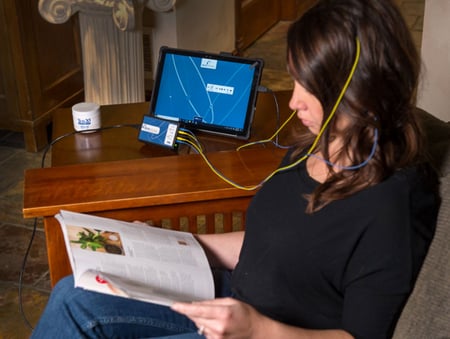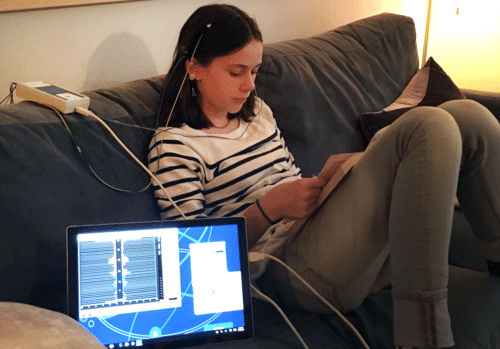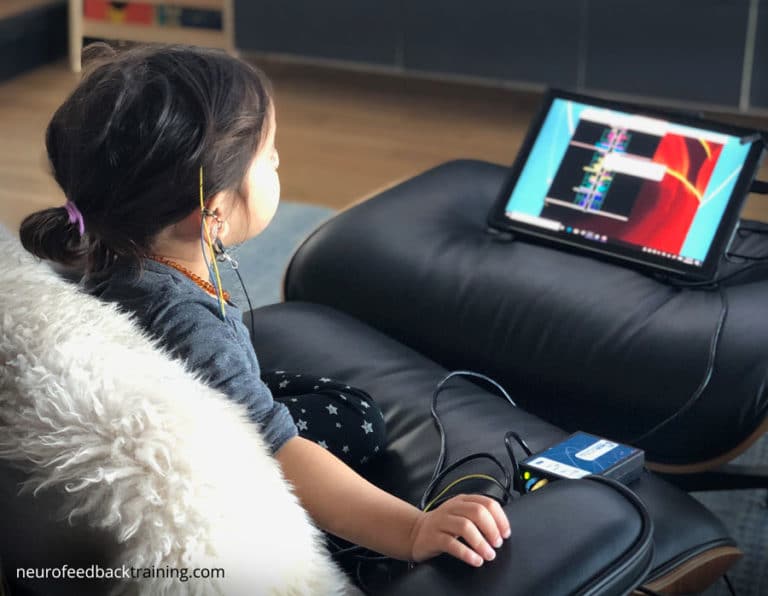At our Denver Neurofeedback office we get this question daily. Not surprising because neurofeedback is a relatively new brain training technology. It has been around since the 1970s but only in the last 10 years has it become popular with research articles being published and books like: The Body Keeps the Score by leading trauma expert, Dr. Bessel van der Kolk. This book lists supports for overcoming traumatic stress and includes a chapter on neurofeedback.
Our two most frequently asked questions are:: what are the benefits and is neurofeedback appropriate for all ages? The short answer to both questions is: anyone, at any age, can benefit from NeurOptimal neurofeedback if they would like to help manage sleep, improve clarity and and create emotional balance. NeurOptimal® users find regular brain training helps them meet and overcome life’s stressors and obstacles.

What areas benefit the most from neurofeedback?
In our nine years of offering NeurOptimal® neurofeedback, the biggest area impacted in clients is stress and how they handle stressors. In the mental health and wellness field experts have come to understand that we don’t choose to be stressed. The automatic functioning brain does.
The other factor that contributes to high stress levels is that the brain becomes habituated to the stress response. Signs that we are habitually stressed are when we react to negative events with:
- getting angry,
- feeling overwhelmed,
- waking up at 2 AM worrying about a work problem, and
- finding ourself not enjoying life.
And unfortunately in this generation our children are experiencing stress at levels we shouldn’t ignore. Teen stress is at its highest levels in the US. Fortunately, their brains are very malleable and they can shift into a healthier response pattern they just need help resetting. As we all do.
Can The Brain Change Its Stressed-Out Habit?
Yes, thankfully what I was taught in neuropsychology class in college 25 years ago – that the brain can’t change and is a fixed system – we now know is wrong.
We were taught that if you lose functioning because of a concussion or stroke you’re not going to get it back. We now know that we practices and tools that help the brain rewire itself that rehabilitation is possible.
Experts’ understanding of the brain and how to change the brain has advanced a lot since then and now we all know the brain is plastic (neuroplasticity) but what it needs is to improve its functioning is good information. That’s where neurofeedback comes in…
NeurOptimal neurofeedback helps us to reset our reactivity to stress. The brain is literally being trained out of that habit. But to understand how, we first have to look at what is the stress response?
_________________________
ALSO READ
How Does Neurofeedback Work? NeurOptimal Explained
_________________________
The Brain’s Stress Response

Here’s a graph of the dynamics of the stress response and what the brain is assuming. Notice that when we are in Zones 1 or 3 our brains are assuming we are in some degree of danger. We naturally flow in between these three zones throughout the day. But for some of us we spend too much time in Zones 1 and 3, a sign we are not resetting when we meet a stressor.
In Zone 1 and Zone 3 the stress response is ruling our decision making. We have a hard time being present but instead fixate on the past and future. The limbic portion of our brains, our primitive brain, is in charge. It has three tools: fight or flight the danger (Zone 1) or play dead (Zone 3).
In Zone 1 we feel: unsafe, have mental ruminations, lack focus when we need it, feel scattered, feel anxious, worried, want to flee social situations, feel overwhelmed and are easy to anger and feel attacked by others. Long term habituation to Zone 1 reactivity are seen in insomnia, anxiety disorders, panic attacks, PTSD, and ADHD.
In Zone 3 we also feel unsafe but are often too numb to realize it. It’s marked by feeling hopeless, powerless and down about life. We have a hard time connecting with others, want to shut ourselves off, and can socially isolate and sleep too much. “Why bother?” is a common attitude when we’re stuck in Zone 3. Long term habituation to this zone is conditions like depression.
When our brain is healthy it will stay most of the time in Zone 2. Life feels workable and relatively safe. We are able to engage with others, use logic to think things through. Pause when we need to and engage in activities that keep us healthy. We sleep better, can laugh at our silly mistakes, and not take the world quiet so seriously. We can also shift gears and focus when needed, organize our tasks to prevent being overwhelmed.
Habits form and we get stuck. But the brain is not meant to be stuck, it’s a dynamical, non-linear information processing system. The problem is that it’s not registering what the here-and-now needs are.
NeurOptimal® comes in. With brain training we are learning to live, as much as possible, in Zone 2. The brain wants information that will allow it to optimize its functioning, to get out of the fight/flight, freeze response.

Unlike the first generation of neurofeedback systems -linear or protocol-based systems -that are using a brain map or normative data to decide how to create that re-regulation of the brain, NeurOptimal is based on how the brain truly functions.
The software in NeurOptimal® gives the brain information about moment-by-moment habits, and the brain uses that information in real time to reset. To get some idea of how fast the brain works, the NeurOptimal device measures the activity of the brain 256 times/ second about it’s electrical behaviour. The parameters of change are set by the emergent brain not by an external trainer (as is with protocol).
Watch this video on how NeurOptimal works.
Feeling calmer, greater mental clarity, like the windshield wiper just cleaned off that bug smeared glass, greater sense of workability. Less agonizing thoughts of worry and being fearful, better organizing skills, ability to delay gratification, less impulsive anger, acting out, lighter, more cheerful.
_________________________
ALSO READ
The benefits of neurofeedback training and watch client success stories.
_________________________
About NeurOptimal® Neurofeedback Benefits
NeurOptimal Neurofeedback is a game-changer in how family’s communicate.
- Communication shifts from reactive/defensive to openness and exchange of information.
- The Central Nervous System (CNS) all come into regulation making it harder for one system to go into disregulation.
NeurOptimal Neurofeedback helps stabilize mood so that decision-making can be a response rather than a stress reaction.
- Decisions happen from gathering information, (information not experienced as a threat), planning and delayed gratification,
- There is heightened ability to have insight because the CNS isn’t as reactive so therefore can actually see and understand contributing factors.
NeurOptimal Neurofeedback helps with decreasing substance use for re-regulating the brain.
- It alerts the brain when it’s going into hyper or hypo arousal and helps it re-regulate, making it so patients brains don’t “ask” for drugs, food or alcohol.
NeurOptimal® Neurofeedback helps with school performance.
- For patients who have focus and attention issues, this kind of neurofeedback training helps not just with the craving and triggers, but also with overall executive functioning. Their school performance will improve which helps with self-esteem and resiliency. Learn more on how to enhance school performance naturally
Find a NeurOptimal® Neurofeedback Trainer or Rent a Home System
Next step? We provide both sessions and home system rentals at our locations in New York, Los Angeles (Pasadena) and Denver, Colorado.
Do you like Neurofeedback Los Angeles? Share your feedback with us here.
Schedule your first sessions, rent your device or just say hello.





